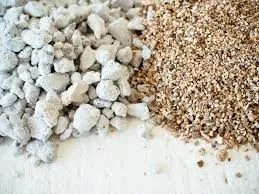Dec . 04, 2024 18:16 Back to list
vermiculite and asbestos factories
Vermiculite and Asbestos Factories A Story of Safety and Controversy
Vermiculite is a naturally occurring mineral that has garnered significant attention for its unique expansion properties when heated. This lightweight, fire-resistant material has been widely used in various applications, including insulation, horticulture, and as a soil conditioner. However, the mining and processing of vermiculite are inextricably linked to a complex narrative involving asbestos, a substance known for its hazardous health effects. This article delves into the history, production processes, safety concerns, and regulatory developments surrounding vermiculite and asbestos factories.
Vermiculite is formed from the weathering of micas and undergoes a process of exfoliation when subjected to high temperatures. This process creates the light, fluffy material that is prized in many industries. However, the most notable source of vermiculite in the United States came from a mine in Libby, Montana, which was operational for several decades. This mine was not only known for its high-quality vermiculite but also for containing significant amounts of tremolite asbestos, a particularly dangerous form of asbestos.
During the extensive operations of the Libby mine, workers and residents were often exposed to both vermiculite and asbestos fibers. Asbestos exposure has long been associated with severe health conditions, including lung diseases, mesothelioma, and asbestosis. The dual nature of vermiculite’s mining in Libby led to tragic health outcomes for many individuals involved in or living near the vermiculite factory operations. Reports indicate that hundreds of miners and others in the community developed illnesses related to asbestos exposure, feeding into a broader public health crisis.
In the late 1970s, awareness of the dangers of asbestos began to rise, leading to increased scrutiny of industries involved in its extraction and use. The Environmental Protection Agency (EPA) and the Occupational Safety and Health Administration (OSHA) implemented regulations aimed at safeguarding workers and the public from the dangers associated with asbestos. The Libby situation prompted immediate investigations and health assessments, revealing the higher-than-normal incidence of asbestos-related diseases among residents and workers.
vermiculite and asbestos factories

As public awareness grew, companies that processed vermiculite faced immense pressure to address safety concerns. Many factories were required to adopt stringent health and safety practices, including monitoring the air for asbestos fibers, providing proper protective equipment to workers, and implementing clean-up operations in contaminated areas. The tragic legacy of Libby serves as a cautionary tale about the importance of recognizing potential risks associated with naturally occurring minerals.
In light of the historical context, the production of vermiculite has evolved. Today, manufacturers raise awareness about the need for strict testing and regulation to ensure that vermiculite is free from asbestos contamination. The industry promotes responsible sourcing and greater transparency about the origins of vermiculite products. Consumers are encouraged to seek products that are certified as asbestos-free, to avoid the associated health risks.
Moreover, the regulatory landscape for vermiculite and asbestos has transformed significantly over the years. The introduction of various legislative measures aimed at safeguarding public health has increased accountability among manufacturers. Environmental standards have been established that require factories to minimize asbestos exposure and conduct regular assessments.
In conclusion, while vermiculite itself has valuable properties, its historical links to asbestos contamination have raised crucial safety concerns that cannot be overlooked. The legacy of vermiculite and asbestos factories, particularly in Libby, highlights the need for stringent regulatory measures and community awareness to prevent similar public health crises in the future. As consumers, it is vital to remain informed about the materials we use and ensure that our health and safety are prioritized in the manufacturing processes of essential products. The path forward demands a commitment to responsible practices, rigorous testing, and transparency in the industry to safeguard both workers and consumers from the potential dangers associated with vermiculite and asbestos.
-
Eco-Friendly Granule Covering Agent | Dust & Caking Control
NewsAug.06,2025
-
Fe-C Composite Pellets for BOF: High-Efficiency & Cost-Saving
NewsAug.05,2025
-
Premium Tundish Covering Agents Exporters | High Purity
NewsAug.04,2025
-
Fe-C Composite Pellets for BOF | Efficient & Economical
NewsAug.03,2025
-
Top Tundish Covering Agent Exporters | Premium Quality Solutions
NewsAug.02,2025
-
First Bauxite Exporters | AI-Optimized Supply
NewsAug.01,2025
